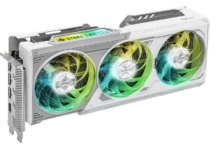CoolIT Freezone Elite is not just any CPU cooler. It’s the successor to the CoolIT Freezone and just like the predecessor it’s a all-in-one water cooling kit with a touch of TEC. The Elite has a lot to live up to and today we will test it.
Cool and Quiet. A tall order for modern computer
systems, especially with faster components that produce more heat. It is a battle that PC enthusiasts wage endlessly in a struggle to maximize performance, and some people go to great lengths to achieve that: liquid nitrogen, anyone?
For mere mortals, however, liquid nitrogen might be just a tad overkill, so what’s a person to do if air cooling a CPU just doesn’t cut it when you’re looking to squeeze those extra megahertz out of your CPU but don’t want your case to sound like a jet engine? Many people turn to what is considered a
more “mainstream” exotic method of cooling: liquid.
Most people associate liquid cooling with a traditional watercooling setup, complete with pump, reservoir, tubes, and blocks, and many people find this rather intimidating. Questions and fears about broken hoses, leakages, and
seeing your beloved new Quad Core CPU sitting in what amounts to a little aquarium are not uncommon, although most of those horror stories are part fact, part urban legend. So for those enthusiasts who want to move beyond air
cooling but fear the thought of a geyser inside their case, there is another alternative: thermoelectric cooling (TEC). Today we’ll be examining a TEC product that isn’t your typical liquid cooling unit and claims to offer advanced cooling capabilities: the CoolIT Systems Freezone Elite.
Thermoelectric Cooling (TEC)
Before we delve into the CoolIT Systems Freezone Elite, let’s have a quick lesson on the technology behind it. The premise behind thermoelectric cooling (TEC) is rather simple actually. Instead of using mechanical cooling such as a pump and radiator in a traditional watercooling setup, a TEC
setup has a “plate” made of two different metals or semiconductors that has an electric current passed through it. In essence, you have two sides: a hot side and a cold side. So, electrical energy is applied and the cooling
side of the TEC lowers the temperature of the liquid coolant, then that heat is transferred to the hot side of the plate, which is then cooled by the exhaust fan. So then, the liquid coolant is pumped through several thermoelectric cooling blocks which chill the water housed inside them, and the heat from the hot side is exhausted by a fan at the rear of the
unit. TECs are often used in with a watercooling system or a heatsink. The Elite uses the latter a large heatsink. And that’s it, quite simple in practice. Historically TEC has been fairly inefficient, but they do have some very distinct advantages such as limited mechanical parts, a closed system, ease of installation, and the ability to
achieve temperatures far lower than a watercooling system with a pump and radiator. CoolIT Systems appears to believe they have produced a unit that overcomes some of those inefficiencies and now offers benefits that outweigh the
drawbacks.
 |
CoolIT is based in Calgary, Alberta, Canada, and has recently made some big headlines due to several large system builders such as Alienware, Dell, Biohazard, AVA, Shuttle, and Velocity Micro choosing to integrate CoolIT’s
products into their high-end gaming systems. For the consumer who wishes to use a standalone cooling solution, CoolIT offered the Freezone, widely regarded as an innovative TEC product, but not without its criticisms either. Back from the drawing board, CoolIT has responded with the Elite, which is an updated revision of the original Freezone. So the Elite is not an upscale version of the Freezone; rather, it is an evolution of the same product that offers improved functionality and seeks to correct the issues raised after
the release of the original Freezone.
The Elite is a self-contained liquid cooling system that is viable for over 50,000 hours according to CoolIT. Designed to be virtually maintenance-free, and comes pre-plumbed, the Elite is targeted to today’s Quad Core processors and has a thermal dissipation potential of approximately 250w.
Let’s take a look at the Elite’s specifications and contents in greater depth…
Here are the specifications of the Freezone Elite:
|
CoolIT Freezone Elite
| |
| CPU FHE (Fluid Heat Exchanger) | |
| Design: |
Monolithic copper, multi-cell |
| Dimensions: | 43 x 42 x 16.5 mm |
| Weight: | 175g |
| TCM (Thermal Control Module) (See TCM and MTEC Datasheets for full details ) | |
| Basic TCM | Control module that offers basic control functionality. |
| MTEC Control Center Module (Please see MTEC Control Center Data Sheet.) | Full featured system status monitor and control module. |
| Chiller and Pump Module | |
| Heatsink | |
| Design: | Dual dissipation plate, anodized alloy |
| Dimensions: | 121 x 92 x 65 mm |
| Weight: | 800g |
| TECs (6) | |
| Power usage | Max total 72 Watts |
| Design: | Six solid-state heat pump wafers |
| Dimensions: | 40 x 40 x 3.5 mm (each) |
| Weight: | 20g (each) |
| Chiller FHE’s (2) | |
| Design: | Dual anodized alloy distribution, multi-channel |
| Dimensions: | 121 x 41 x 12 mm (each) |
| Weight: | 80g (each) |
| Fan | |
| Power usage: | Max 8 Watts |
| Airflow: | 120 CFM |
| Noise: | Max 40 dBA |
| Bearing Type: | Dual ball |
| Life Cycle: | 50,000 hrs |
| Dimensions: | 120 x 120 x 38mm |
| Features: | 3rd Wire Tachometer |
| Pump | |
| Power usage: | 8W +/- 0.5W |
| Design: | 12VDC coreless outrunner pump with integrated expansion vessel |
| Noise: | <15dBA |
| Life Cycle: | 50,000 hrs |
| Dimensions: | 50 x 50 x 75 mm |
| Flow: | 3.5 L/min |
| Weight: | 205g |
| Options | |
| Optional cooling solutions | Single/Dual CPU Cooling Solution Dual GPU Cooling Solution |
Aside from the unit itself (we’ll look at that in a minute), the contents
include a Chiller/Pump, Thermal Control Module (TCM), and CPU Fluid Heat
Exchanger (FHE), a CD with the MTEC Control Center software, and all the
necessary connections. Here is the
content of the Freezone Elite package:

The package contains all the necessary mounting hardware for various AMD and
Intel sockets, cables, and installation software. Let’s look at the unit
now.
As mentioned, the Elite is more of a revision of the original Freezone, so let’s look at some of those differences. Essentially the unit is the same technology and design, with a few aesthetic and functional improvements. The first (and perhaps most important) change is the inclusion of a 120mm fan, up from the previous 92mm fan. This was a major criticism of the original Freezone, and it is encouraging to see CoolIT paying attention to the feedback it received. This should help increase the cooling performance of the unit, not to mention lowering the sound levels too.
The other major functional difference is that the Thermal Control Module (TCM) has been replaced with a full MTEC Control Center. Our photos below show the existing Freezone TCM (since this is a pre-retail unit), but CoolIT indicated this would not be included on the retail builds; rather, the Elite will feature an improved MTEC Control Center, which appears to be a more advanced and user-friendly method of temperature regulation. This will be used to protect against over-cooling and condensation, regulating the amount of power that is sent to the TECs. Since the TCM/MTEC regulates the TECs, it functions far more than a simple fan regulator, and can be adjusted to suit the particular user’s preferences for cooling. It can be set to reduce the coolant temperature further and thus giving better performance, or set to reduced power output for quieter operation, albeit at a cost of cooling performance. A medium setting seems to provide a combination of the best advantages of each. CoolIT has also confirmed that the control module will not be mounted on the unit itself, as shown in our pre-retail unit, but will be separate and the user can mount it wherever they like. So depending on your case layout, you will have the option of mounting the control module on a drive cage, or anywhere easily accessible inside your case.
Another minor functional revision is that the hosing has also been changed in length to make the CPU socket
more easily accessible. There have also been two aesthetic changes: the inclusion of LED lighting behind a translucent CoolIT logo on the faceplace of the unit, which allows a subtle glow to shine through when viewed at low light levels, assuming you have a case that has a window. Additionally, the unit itself has a sleeker overall design and components now seem to have a better “fit”. The last aesthetic improvement is that the face plate on the Elite will be black, not silver as shown on our pre-retail unit. The black face plate and new black hoses, in our opinion, is a sleek improvement from the current silver offering.
Here we see close-ups of the Elite, front and side. As you can see, the Thermal Control Module is now located at the rear of the unit. As indicted, the Thermal Control Module will be replaced with the MTEC Control Center in the retail unit:
 |
 |
Below is the original Freezone (left) and the new Elite (right), viewed from the rear side. Note the slight different in color scheme and the TCM location. I should mention the Freezone shown below does not have the original stock 92mm fan, as this one was modded with a 120mm fan. That notwithstanding, the differences are still visible:
 |
Below is the original Freezone (left) and Elite (right) viewed from the front faceplate. You can see the Elite has a smaller profile and sports a sleeker, more minimalist overall design:
 |
Lastly, a couple of more viewpoints (Freezone left, Elite right):
 |
 |
Let’s take a look at the installation of the Elite.
Installation of the Freezone Elite was fairly straightforward, immensely easier than a traditional watercooling system, due to the fact that the Elite is a closed loop/self-contained system. There are no radiators to flush, no coolant to mix or drain, no pumps to install and prime. You attach the mounting bracket to the motherboard (which must be removed from the
case/motherboard tray), then attach the cooling block to the mount, and then attach the unit into the rear of your case where a case fan normally is attached. That’s it, very simple and quite effective.
Here we see the mounting bracket and CPU block:
 |
The unit is attached into the rear case fan location:
 |
 |
 |
As you can see, the unit is a fairly substantial size, although it does fit easily into a case that is loaded with hardware (2 x eVGA GeForce 8800 Ultras in this particular instance). There is one noticeable issue, however, with the installation of the Elite in this setup. As you can see below, the Corsair Dominator fan, with its extra height, does not clear below the Elite’s pump, and actually wedges against it. The tolerances are very fine, but the problem does exist. This isn’t necessarily CoolIT’s fault, however, but it is worth mentioning. If you wish to use the Elite for your
system and wish to also use a RAM fan, then you should possibly consider an alternate model/manufacturer. There are several on the market, including a RAM fan made by CoolIT. We didn’t have one nearby to test, but let’s hope that CoolIT’s Elite is compatible with its own RAM fan. Below shows the clearance problem:
 |
Here is the Elite fully installed into a CoolerMaster 830
Stacker case, illustrating the new LED lighting effect:
 |
Since the Freezone Elite is designed to cool a Quad Core CPU, we decided to use exactly that. We dropped the Elite into our extreme high-end rig to see how it would fare against the best hardware setup we could throw at it. As you can see below, our test rig is no slouch and should prove to be enough to challenge the Elite. Here is our test setup:
Test System | |
| Hardware | |
| Motherboard | ASUS Striker Extreme |
| Processor | Intel Core 2 Extreme QX6800 (2x4MB) |
| Memory | Corsair Dominator 8500 (4096MB) |
| Graphics card | EVGA GeForce 8800 Ultra (x 2) in SLI |
| Power supply | CoolerMaster 1K Real Power Pro |
| Storage | 2 x 150gb Western Digital Raptors in RAID0 |
| Case | CoolerMaster 830 Stacker |
| Cooling | CoolIT Systems Freezone Elite |
| Software | |
| Operating System | Windows XP 32-bit, Service Pack 2 |
| Graphics drivers | 163.69 |
| Monitoring software: | CoreTemp 0.95 SpeedFan 4.32 |
The QX6800 was run both at idle and overclocked. Temperatures were measured in CoreTemp and SpeedFan at low, medium, and high fan speeds for each combination and CPU setting. The fan speeds and setups in the CoolerMaster
were kept identical, and ambient temperatures were consistent throughout the tests. No side panel fans were used on the Stacker.
Blue is for High fan setting, gray for Medium and red for Low.
As you can see, the results across the board are very impressive. The Freezone Elite does an excellent job keeping a Quad Core CPU cool, particularly when used at the high fan setting. At the lowest fan setting, temperatures are still very good but using the medium fan setting offers the best balance between performance and noise reduction, as the high fan setting is definitely noticeable as far as noise is concerned. We see a temperature difference of approximately 6 – 7 °C at the high fan setting, and up to a 10 – 11°C difference at the low fan setting.
When the Quad Core CPU is overclocked to 3.5 ghz, we see that the lowest fan setting starts to struggle
with cooling, while the high fan setting still manages to post very impressive numbers. This would seem to indicate there is a thermal limit when the Elite may no longer be efficient in trying to handle the amount of heat being generated by the CPU, particularly under load. We suspect that the Elite will near its limit when a Quad Core CPU is highly overclocked. Where that limit exactly resides may be the subject of debate, no different than the limits posed by a traditional watercooling system. Each enthusiast has a “comfort zone” in which they will continue to push the thermal envelope. According to CoolIT, the Elite is designed for a heat dissipation of 250w, and we believe that is certainly an adequate threshold for most users.
Note: We had intended to push the QX6800 beyond 3.5 GHz to see what clock speeds would give us 3DMark and SuperPi stable, but unfortunately we ran into technical difficulties (motherboard) and could not continue our overclocking.
The CoolIT Freezone Elite is a
product that builds upon the design and performance of its predecessor, the original Freezone, by offering consumers maintenance-free operation in a plug and play unit. For people who shy away from watercooling for various reasons, the Elite offers a high-performance solution that is accessible and simple to set up and operate.
The Elite offers improved features
that nagged the original Freezone, and CoolIT seems to have implemented some design tweaks that also make the unit more user-friendly as well. The performance of the Elite is quite simply excellent, particularly when used with the high fan settings. Our subjective opinion is that the Elite is quieter than the original Freezone, but it is still not silent, and some users may find the noise generated at the high settings to be undesirable. Although some of the unit’s efficiency is lost during high overclocks, it still manages to keep a Quad Core CPU cooled well under the recommended thermal “safe threshold”. The Elite is also easy to install and maintenance-free (other than perhaps cleaning off some dust once in awhile that might get trapped inside your case).
Even considering these minor issues, we still recommend the Elite to anyone that is looking to go beyond
standard air cooling, or those who are looking for an alternative to traditional liquid cooling. Though it seems there is a thermal limit as to how well the Elite can handle excessive heat produced from an overclocked Quad Core CPU, we believe there will be more than sufficient headroom for the vast majority of users, perhaps except those extreme overclockers that are looking to push their system to the redline or beyond. We don’t believe the Elite will become a
replacement for watercooling, but it definitely offers a viable alternative to the masses.
Since the Freezone Elite is not yet
available for retail sale, we’re not sure of the exact final pricing, but if the original Freezone’s pricing is any indication then the Elite will likely cost a few hundred dollars $US. This may prove somewhat to be its Achilles Heel, though given the success of its predecessor and the improved features and steady performance of the Elite, we believe many people will find the pricing justified.
CoolIT Systems Freezone Elite’s performance, ease-of-use, and maintenance-free operation offers an innovative and compelling alternative to a traditional watercooling system.
|
CoolIT Freezone Elite
|
|
Pros + Excellent cooling performance Cons – Somewhat noisy on high fan |

CoolIT Systems Freezone Elite
We want to thank CoolIT for supplying us with
this sample.


















